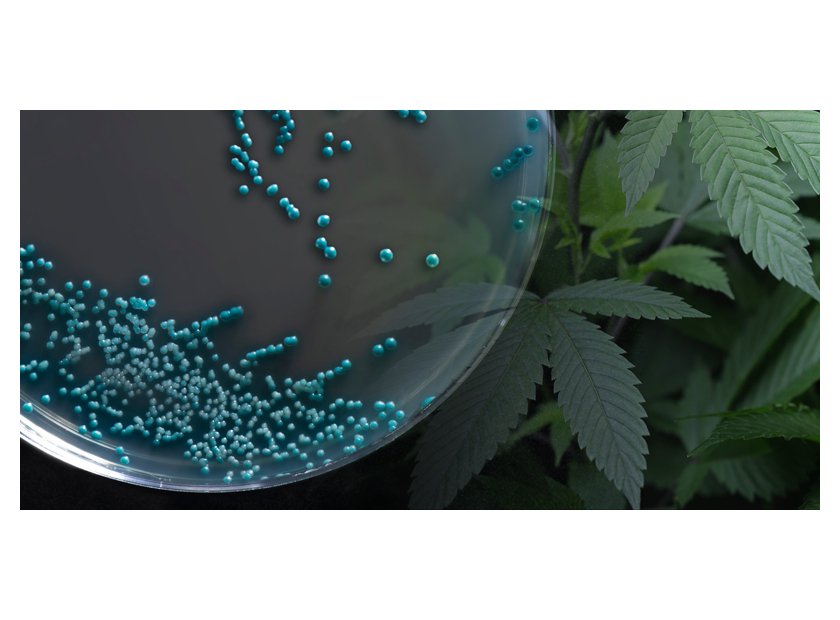Is that really pharmaceutical grade cannabis?
Cannabis has many
different modes of delivery and applications for use. The most common ways that
cannabis is used in our society today are: a smokeable, an edible, an oil or
infused product. According to most market researchers, flower products and
concentrates are the top sellers, with edibles and cosmetics also representing
a solid segment of the market.[1] With new, innovative
applications coming to market all the time, there is a whole world of cannabis derived
products available to the public. When one thinks about the contamination that
can happen during the production of these goods, either directly from the
cannabis plant or from the processes surrounding how the products are made, it
is easy to identify failures that have the potential to contaminate the
products that patients and consumers are buying.
The laws for testing
cannabis goods are at an early stage. There is considerable variation when it
comes to the regulations regarding testing of cannabis products for contamination. The industry is still
struggling to define what cannabis is and how to test the multitude of finished
goods made with it. What does that mean? Simply put, the cannabis patients are
buying for medicinal use is most likely not being tested to the pharmaceutical
standards that one would expect. Furthermore, the edible, cosmetics and oils for
vaping are coming out of a sparsely regulated industry that is still trying to
catch up to the type of finished goods testing expected from every other
industry. The industry needs to be testing our finished goods in a way that
makes sense for the end user of the product. For example, testing raw cannabis flower
or oils for common pathogenic mold and other organisms is a great place to
start. However, if we are not testing our cosmetics, lotions, tinctures,
suppositories, inhalers, and brownies in a way that reflects the processes and
environments they are being made in, or the intended user, we are neglecting
the overall safety of that product. Testing our cannabis raw materials to make
sure it is safe is really only just the beginning.
Thankfully, there are cannabis clinicians and professionals who understand the importance of this topic. There are significant hurdles however that need to be addressed. Here are some of the major impediments to the collective ability to properly regulate the cannabis market.
- Federal Prohibition Laws
2020 is poised to be the year Americans finally stop saying if and can in full confidence start
talking about when cannabis
prohibition will end on a federal level. The most recent projections estimate
that 90% of the US population will be living in a jurisdiction with some form
of legal cannabis by the end of the year. The states are asking for FDA support
when it comes to drafting testing requirements. Furthermore, most states simply
do not have the resources required to properly enforce the laws that have been
written. The cannabis industry needs the support of the federal government to
help ensure that the products and medications are safe in all applications.
- Variance in Regulations From State to State
The lack of oversight in the industry as a whole has led to a
wide variety of legal requirements from state to state. This patchwork of
regulations has made an already complicated discussion even more confusing. There
are states requiring broad testing while other states have little to no
regulatory requirements at all. Ultimately, this only jeopardizes the public.
The industry is selling millions of dollars of product to the public that may
or not be safe for human and/or animal consumption.
- The Idea That “Cannabis Doesn’t Make People
Sick.”
There is medical research out there that supports what many
already believe, cannabis can be an amazing therapy for a whole host of
diseases and disorders. [2] The type of testing being
called for in this article does not speak to the efficacy of the plant as medicine,
but instead protects users from the contamination that can be introduced to the
finished good during the production and processing steps. Microbial
contamination is not a function of the plant, but compromised product does
contribute to disease and death.[3] Additives, heavy metals
and pesticides are part of the process for creating many of the products on the
market and those components have the potential to injure and even kill.
- “We
Can’t Afford It!”
This is a hard one. Many of the people in this industry have
fought for years and even decades to move cannabis into a legal landscape. No
small number of the people in the cannabis industry are involved because of a
personal story of healing or comfort that lead to a passion to make cannabis
accessible to all. At the same time, the businesses are fighting to be
profitable. Testing is expensive and companies can feel that they have been
delivering safe product with no problems for a long time. Some may be asking,
“Why do we have to change now?” The reality remains though; immunocompromised
and pediatric patients are more vulnerable than the general population. The
testing requirements for products labeled as medicine and sold as such must
ensure safety. The general public has an expectation of minimum safety
thresholds for goods sold at large. The vaping crisis shows how quickly a small
lapse in vigilance can have deadly and costly consequences. The industry is
very young and competitor industries will be quick to capitalize on any
opportunities to malign cannabis. Through thoughtfully written regulations and
proper testing practices, the industry can protect the reputation of the plant that
so many believe is improving their quality of life.
[1] https://bdsanalytics.com/top-10-cannabis-market-trends-2019/
[2] https://www.calgarycmmc.com/reliefofsymptoms.htm
[3] https://www.ncbi.nlm.nih.gov/pmc/articles/PMC3103256/

Jessa Youngblood is the cannabis industry specialist at Hardy Diagnostics. She sits on
the AOAOC CASP committee for Microbial Contaminants Working Group as well as
the NCIA Scientific Advisory Committee. Jessa has a passion for safe access to
cannabis medicine and regularly leads webinars and trainings to support the
development of cannabis microbiology testing programs across the US and Canada.
As an industry specialist, I have had the opportunity to speak
to many different people in the cannabis market as well as interact with the
incredible products that they are bringing to consumers and patients. When I
see someone with a new application for cannabis, it is exciting to think of how
it can impact and change lives. While I am optimistic for this bold, new industry,
I am concerned at the lack of testing requirements when it comes to the finish goods.
Let us join together to push forward into a more developed, safer market by
addressing the hurdles we face. Reach out to others manufacturing products like
yours in similar industries to learn how their processes have evolved to ensure
safety. Reach out to regulatory and industry specialists to learn what steps
you can take now to be prepared for the end of federal prohibition.
Implementing these standards is the best way to protect the clients that use
your products and your business future.







